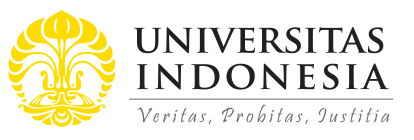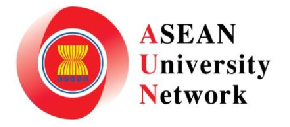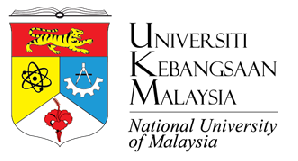
Abstract
This paper discusses the Malay Minorities of the Malay Minorities in the Tenasserim Coast. And Tanintharyi Division is an administrative region of Myanmar at present. When we look closely at some of the interesting historical facts, we see that this region is “Tanao Si” in Thai, or Tanah Sari in Malay. This region belonged to Tanah Melayu, or Malay Peninsula, which was part of the Sultanate of Kedah. It was occupied first by the Ayutthaya Kingdom and later by Burma. Moken people of the Austronesian-speaking tribes who live on the coast and on the islands of the Andaman Sea up through the Mergui Archipelago of Myanmar have rationally attracted the attention of researchers. The group includes the Mokens themselves, the Moklen (Moklem), the Orang Sireh (Betel-leaf people) and the Orang Lanta. The Orang Lanta are a hybridized group formed when the people of Malay settled in the Lanta Islands, where the proto-Malay Orang Sireh had lived. The Burmese call the Mokens "selung," "salone," or "chalome." For this study, secondary data on the relevant history was collected and two complementary approaches were used as the research methodology to identify, analyze, and understand different patterns of knowledge-sharing within complex social systems. Finally, the paper discusses the significance impact of human migration in Southeast Asia.
References
Andaya, B. W., & Andaya, L. Y. (2016). A history of Malaysia: Macmillan International Higher Education.
Andaya, L. Y. (2002). Orang Asli and the Melayu in the History of the Malay Peninsula. Journal of the Malaysian Branch of the Royal Asiatic Society, 75(1 (282)), 23-48.
https://www.jstor.org/stable/41493461?seq=1#metadata_info_tab_contents
Anderbeck, K. (2012). The Malayic-speaking; Orang Laut Dialects and directions for research. Wacana: Journal of the Humanities of Indonesia, 14(2), 265-312.
https://brill.com/view/journals/waca/14/2/article-p265_5.xml
Baker, C. (2014). A history of Thailand. United Kingdom: Cambridge University Press.
Baker, J. (2020). Crossroads: a popular history of Malaysia and Singapore. Singapore: Marshall Cavendish International Asia Pte Ltd.
Baldick, J. (2013). Ancient religions of the Austronesian world: from Australians to Taiwan. Tauris.
Belle, C. V. (2014). Tragic Orphans: Indians in Malaysia (Vol. 496). Singapore: Institute of Southeast Asian Studies.
Bernardini, W. (2005). Reconsidering spatial and temporal aspects of prehistoric cultural identity: A case study from the American Southwest. American Antiquity, 70(1), 31-54.
https://www.jstor.org/stable/40035267
Boutry, M. (2014). The Maung Aye’s Legacy. Burmese Lives: Ordinary Life Stories Under the Burmese Regime, 147.
Brown, K., & Ogilvie, S. (2010). Concise encyclopedia of languages of the world. Amsterdam, The Netherlands: Elsevier.
Chambers, G. (2006). Polynesian genetics and Austronesian prehistory. Indonesian Institute of Sciences (LIPI).
Chambers, G., & Edinur, H. (2015). The Austronesian Diaspora: A Synthetic Total Evidence Model. 2(2), 53-65.
https://doi.org/10.15379/2410-2806.2015.02.02.06
Charney, M. (2009). A History of Modern Burma. United Kingdom: Cambridge University Press.
Din, M. A. O. (2011). Asal-Usul Orang Melayu: Menulis Semula Sejarahnya (The Malay Origin: Rewrite Its History). Jurnal Melayu, 7.
http://ejournal.ukm.my/jmelayu/article/view/5003
Embongak, A. M., Jusohb, J. S., Husseinc, J., & Mohammadd, R. (2016). Tracing the Malays in the Malay land. Procedia-Social and Behavioral Sciences, 219, 235-240.
https://doi.org/10.1016/j.sbspro.2016.05.011
Fernandez, C. (1999). Colonial Knowledge, Invention and Reinvention of Malay Identity in Pre-Independence Malaya: A Retrospect. Akademika, 55(1).
http://ejournal.ukm.my/akademika/article/view/3012
Ghazali, A. Z., & Ramli, Z. (Eds.). (2013). Panji pendeta: memperingati 50 tahun Professor Emeritus Dato'Dr. Nik Hassan Shuhaimi bin Nik Abdul Rahman dalam bidang pendidikan. Institut Alam dan Tamadun Melayu (ATMA), Universiti Kebangsaan Malaysia dan Ikatan Ahli Arkeologi Malaysia.
Harvey, G. E. (2000). History of Burma. New Delhi, India: Asian Educational Services.
Haspelmath, M., & Tadmor, U. (2009). Loanwords in the world's languages: A comparative handbook.
Hinshiranan, N. (1997). The analysis of Moken opportunistic foragers' intragroup and intergroup relations.
Ibrahim, W. S. (2013). Reconstruction of Indo-Malayan archipelago’s prehistory and the eventual peopling of Polynesia. Singapore: Institute of Southeast Asian Studies.
Ibrahim, W. S. (2017). Roots in Sanscritised Kambuja-desa: A Historical Reconstruction. Royal Academy of Cambodia, Phnom Penh.
Igboanusi, V. I. (2017). The Challenge of Cultural Identity on Regional Integration: A Case Study of ASEAN Community. SIAM University.
Light, I., & Gold, S. (2000). Ethnic economies. Academic Press.
https://ssrn.com/abstract=2761931
Lucassen, J., Lucassen, L., & Manning, P. (2010). Migration history in world history: Multidisciplinary approaches: Brill.
Lynn, K. S. (2010). Burma (Myanmar). In E. C. F. Bird (Ed.), Encyclopedia of the World's Coastal Landforms (pp. 1081-1086). Dordrecht: Springer Netherlands.
na Thalang, C. (2017). Malaysia’s role in two South-East Asian insurgencies:‘an honest broker’? Australian Journal of International Affairs, 71(4), 389-404.
Norhalifah, K. N., Syaza, F. H., Chambers, G. K., & Edinur, H. A. (2016). The Genetic History of Peninsular Malaysia. Gene, 586.
https://doi.org/10.1016/j.gene.2016.04.008
Omar, A. H. (1996). Languages and Language Situation of Southeast Asia. JATI-Journal of Southeast Asian Studies, 3, 14-27.
http://mojes.um.edu.my/index.php/jati/article/download/5614/3362
Renfrew, C. (1990). Archaeology and language: the puzzle of Indo-European origins. CUP Archive.
https://books.google.com.gi/books?id=R645AAAAIAAJ&printsec=copyright#v=onepage&q&f=false
Riccio, M. E., Nunes, J. M., Rahal, M., Kervaire, B., Tiercy, J.-M., & Sanchez-Mazas, A. (2011). The Austroasiatic Munda population from India and its enigmatic origin: a HLA diversity study. Human biology, 83(3), 405-435.
https://doi.org/10.3378/027.083.0306
Simanjuntak, T., Pojoh, I. H. E., & Hisyam, M. (2006). Austronesian diaspora and the ethnogeneses of people in Indonesian archipelago: proceedings of the international symposium. Yayasan Obor Indonesia.
Stier, T. (1927). With Pavlova round the world. United Kingdom: Hurst & Blackett Limited.
Van Driem, G. (2007). Austroasiatic phylogeny and the Austroasiatic homeland in light of recent population genetic studies. Mon-Khmer Studies, 37, 1-14.
http://himalayanlanguages.org/files/driem/pdfs/2007MKS.pdf
Van Roy, E. (2018). Siamese Melting Pot: Flipside Digital Content Company Inc.
Vickery, M. (2003). Funan Reviewed: Deconstructing the Ancients. Bulletin de l'Ecole française d'Extrême-Orient, 90.
https://doi.org/10.3406/befeo.2003.3609
Wan Teh, W. H. (2016). The Origins of Malay. Genetic Resources UITM press.
White, W. G. (1922). The sea gypsies of Malaya. New York, United States: Ams PressInc.
Wilkinson, R. J. (1923). A History of the Peninsular Malays with Chapters on Perak & Selangor. Kelly & Walsh.
http://myrepositori.pnm.gov.my/bitstream/123456789/4500/1/JB507KP_HPMC.pdf.
Recommended Citation
Mar, Ma Tin Cho and Trang, Pham Huong
(2020).
Malay minorities in The Tenasserim coast.
ASEAN Journal of Community Engagement, 4(1).
Available at: https://doi.org/10.7454/ajce.v4i1.1069







